Climbing Africa’s highest peak, Mount Kilimanjaro, is a bucket-list adventure for many outdoor enthusiasts. The 8-day Lemosho Route offers a rewarding trekking experience, gradually ascending through diverse landscapes and providing ample time for acclimatization. Supported by experienced guides and porters, climbers can expect breathtaking views, wildlife encounters, and culture with the local Chagga tribe. While the journey presents inherent risks, a strategic approach to gear selection and acclimatization can enhance the chances of a successful summit. Intrigued by the prospect of this transformative experience, many adventurers are drawn to the challenge of Kilimanjaro’s Lemosho Route.
Key Points
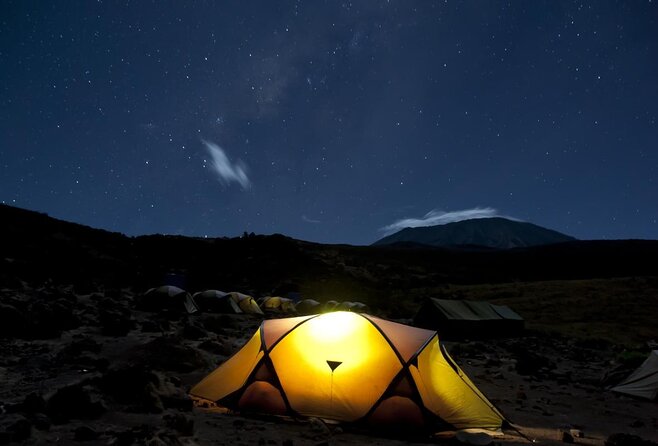
- The Lemosho Route is a scenic and gradual 8-day ascent to the summit of Mount Kilimanjaro, offering a remote and less crowded experience.
- The itinerary features a steady and scenic journey with initial days involving gradual ascents through lush forests and moorlands before the final summit push.
- Proper gear, including waterproof clothing, sturdy boots, and warm sleeping equipment, is essential for the trek’s diverse landscapes and cold temperatures.
- Gradual ascent and acclimatization strategies, such as hydration, high-calorie meals, and rest, are crucial for minimizing altitude-related illness risks.
- The Kilimanjaro climb provides an immersive cultural experience, including interaction with friendly Tanzanian porters and guides and the opportunity to try local dishes.
Climbing Overview
The Lemosho Route on Mount Kilimanjaro is widely regarded as one of the most scenic and gradual routes to the summit.
This 8-day trek offers a more remote and less crowded experience compared to other routes. The route begins in the western base of the mountain and gradually ascends through diverse landscapes, including rainforests, heather, and moorland.
Trekkers can expect to encounter a range of wildlife and breathtaking views along the way. The gradual nature of the ascent helps climbers acclimate to the altitude, increasing their chances of reaching the summit successfully.
You can also read our reviews of more tours and experiences in Moshi.
Itinerary Details

This 8-day Lemosho Route itinerary takes trekkers on a steady and scenic journey to the top of Mount Kilimanjaro.
The first few days involve gradual ascents through lush forests and moorlands, allowing climbers to acclimatize.
After reaching the Shira Plateau, the route merges with the popular Machame Route, offering panoramic views of the mountain’s famous glaciers.
The final push to the summit is challenging but rewarding, with the last night spent at high altitude before the descent.
Throughout the trek, climbers enjoy three meals daily and camp in comfortable tents, supported by an experienced guide and porter team.
This comprehensive itinerary maximizes the chances of a successful, safe, and memorable Kilimanjaro adventure.
Gear Recommendations
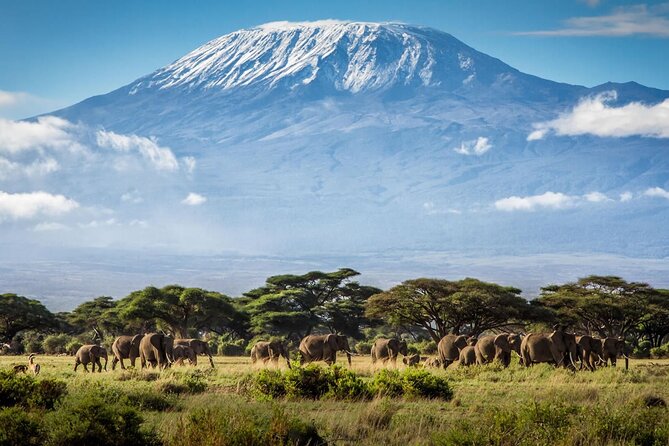
Proper gear is essential for a successful and comfortable Kilimanjaro climb. Climbers should pack a warm, waterproof jacket, hiking pants, base layers, and sturdy, broken-in hiking boots.
Trekking poles, a headlamp, and a water bottle are must-haves. Sun protection like a hat, sunglasses, and sunscreen are crucial.
A warm sleeping bag, sleeping pad, and insulated jacket are necessary for the colder temperatures at higher altitudes. Climbers should also bring basic first-aid items, snacks, and personal hygiene products.
Renting gear locally can be an option to avoid excess baggage. With the right equipment, climbers can focus on the challenging but rewarding journey to the summit of Kilimanjaro.
Acclimation Strategies
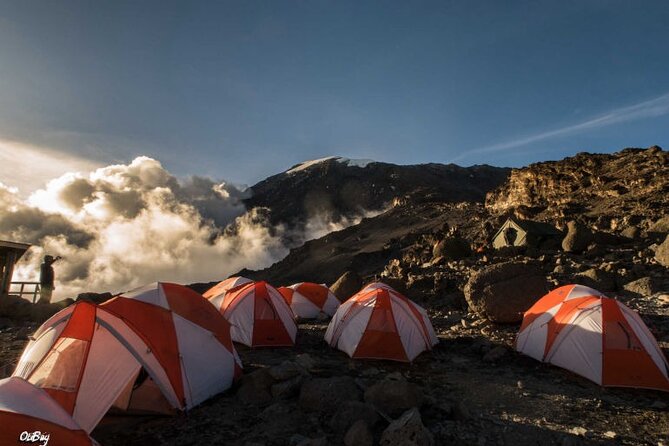
Acclimating properly is crucial for a successful Kilimanjaro climb. The Lemosho route allows for a gradual ascent, which aids acclimatization. Climbers should take their time, listen to their bodies, and avoid rushing.
Drinking plenty of fluids, eating high-calorie meals, and getting sufficient rest are essential. Diamox, a medication that reduces altitude sickness symptoms, can also be helpful. Ascending slowly, with proper rest and hydration, gives the body time to adjust to the decreasing oxygen levels.
This approach minimizes the risk of altitude-related illnesses and increases the chances of reaching the summit. Paying attention to acclimatization is a key factor in having a safe and rewarding Kilimanjaro adventure.
Risks and Precautions
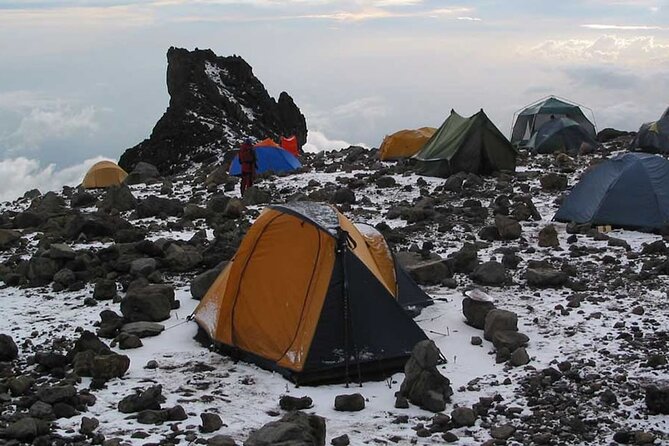
Climbing Kilimanjaro involves certain risks that climbers must be aware of and prepared to manage.
Altitude sickness is a major concern, with symptoms ranging from headaches and nausea to life-threatening conditions. Climbers must acclimatize properly and monitor their bodies closely.
Other risks include dehydration, hypothermia, and injuries from the demanding terrain. Proper gear, pacing, and adherence to safety guidelines are essential.
Reputable tour operators will provide guides trained in wilderness first aid and have protocols in place for emergency evacuations.
While Kilimanjaro is a challenging climb, with the right precautions, it can be successfully conquered by most fit individuals.
Cultural Experiences
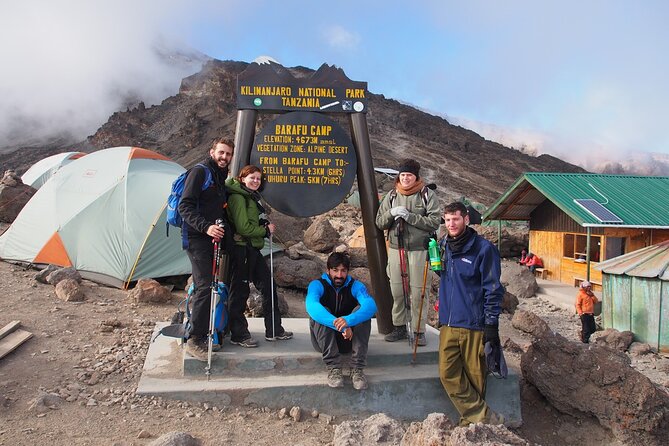
One of the highlights of a Kilimanjaro climb is the opportunity to take in the vibrant local culture.
As you trek through the diverse landscapes, you’ll encounter friendly Tanzanian porters and guides who are eager to share their traditions and way of life.
From learning about the Chagga tribe’s customs to trying local dishes like ugali and mishkaki, these cultural interactions can enrich your overall Kilimanjaro experience.
You may even have the chance to visit a nearby village and see how the locals live.
These cultural exchanges not only provide a deeper understanding of the region but also create lasting memories of your Kilimanjaro adventure.
Booking Information
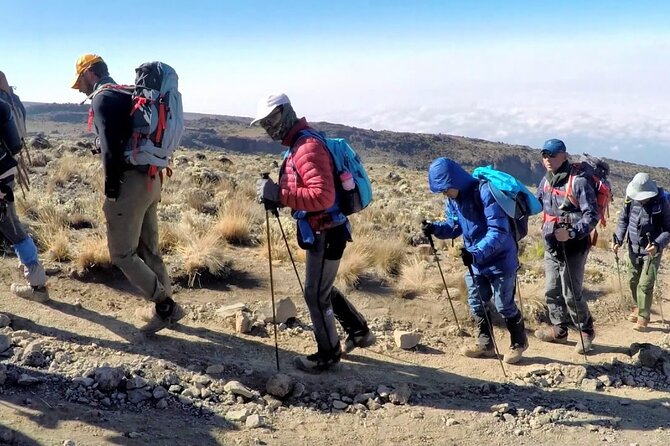
With the cultural highlights of the Kilimanjaro climb now explored, the focus shifts to the practical aspects of booking this exhilarating expedition.
Hikers can confirm their booking and receive immediate confirmation. They’ll also have the flexibility to choose their preferred tour option based on their schedule.
And for those who need to change their plans, free cancellation is available up to 24 hours before the start of the experience.
Prices for this 8-day Lemosho Route climb start from €2,848.17 per person, with the lowest price guaranteed.
Frequently Asked Questions
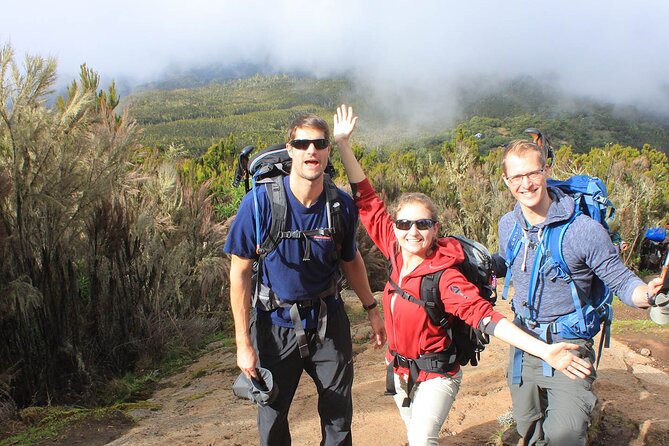
Can I Bring My Own Food While on the Mountain?
No, you can’t bring your own food while on the mountain. The package includes 3 meals daily, so all meals are provided. Any additional snacks or drinks you want to bring would need to be purchased separately.
How Early Should I Arrive Before the Climb?
It’s recommended to arrive 1-2 days before the climb to acclimate to the altitude and ensure a smooth start. This allows time to complete any necessary paperwork and meet with the guide. Arriving early can improve the chances of a successful summit.
What Is the Weather Like During the Climb?
The weather during the Kilimanjaro climb can vary significantly. Temperatures range from warm and sunny at the base to freezing cold and windy near the summit. Climbers should prepare for a wide range of weather conditions, including the possibility of snow, rain, and high winds.
Can I Bring My Own Sleeping Bag and Equipment?
Climbers can bring their own sleeping bags and equipment for the Mt Kilimanjaro climb. The tour provider supplies camping gear, but allows participants to use their personal items if they prefer. This provides flexibility for those with specialized needs or preferences.
How Difficult Is the Lemosho Route Compared to Other Routes?
The Lemosho route is considered one of the more difficult routes up Kilimanjaro. It’s longer, has more elevation gain, and takes more time to complete compared to other popular routes like the Marangu or Machame routes.
The Sum Up
The Lemosho Route on Mt. Kilimanjaro offers an unforgettable 8-day trek through diverse landscapes. With gradual ascent, excellent acclimatization, and experienced support, climbers have a high chance of reaching the summit. Cultural interactions with the local Chagga tribe further enrich the adventure, making it a truly immersive journey. For those seeking a challenging yet rewarding Kilimanjaro experience, the Lemosho Route is an excellent choice.
More Tour Reviews in Moshi
Not for you? Here's more nearby things to do in Moshi we have reviewed
- Day Trip To Tarangire National Park
- Mountain Kilimanjaro Climbing 6 Days Machame Route
- 6 Days Rongai Route Climbing Mt.Kilimanjaro
- 7-Day Kilimanjaro Climb Machame Route
- 7-Days Tour Mount Kilimanjaro Trekking via Machame Route
- Kilimanjaro: Lemosho Route and Camping Safari
- 8 Days 7 Nights Private Lodge Safari
- 5 Days Comfort Safari in Tanzania
- 2 Days Lodge Safari.
- One Day Tanzania Safari – Tarangire or Arusha National Park
- Day Trip Lake Manyara
- Mt.kilimanjaro-machame Route
